Understanding the cachet of design in all its guises, car company Lexus continues to use design to express its ethos – all at the world’s most famous horse race. Annie Reid looks at this year’s Lexus Design Pavilion.
November 21st, 2018
For luxury car manufacturer Lexus, the Melbourne Cup Carnival is one of its major international brand activation events across the year. And this year, its Lexus Design Pavilion was double-sized at 1100-square-metres, occupying pole position on the ‘millionaire’s row’ position vacated by Emirates, and reflecting its new sponsorship role with Melbourne Cup naming rights. According to The Big Group’s Steffanie D’Alberto, who led the pavilion design, the theme of ‘utopia’ was achieved by working backwards; anticipating the guest experience and the way customers moved through each space.
“The customer experience is more than just driving a car,” she said. “So we wanted to create an environment, not a themed space, with beautiful design throughout the interior and exterior that you would want to stay in.” Naturally, maximising the pavilion’s new position was the starting point, where for the first time, Lexus guests could actually see a horse from the elevated aspect with sweeping racetrack views. “We embraced the different vistas by opening up the front to a deck outside surrounded by greenery – it was like an oversized paddock,” laughs D’Alberto.
Australian landscape architect, Jack Merlo created the landscaping, keeping the greenery and foliage clean and simple with balance and harmony, but injecting asymmetrical detailing to honour Lexus’ Japanese brand heritage. “Every element from the Chinese Elms to the Star Jasmine was considered and consistent,” he says. “It’s always satisfying to see people enjoying and experiencing the space.” Once again fashioned from Joost Bakker’s Futurecave structure, the pavilion soared to three levels with an all-black exterior – as opposed to white last year – with the interior growing lighter and lighter imbuing an energy appropriate to the guest experience of each space.
Collaborators this year included artist Anna-Wili Highfield, Volker Haug Studio, Grazia & Co, Studio Twocan, and florals by Cecilia Fox. Highlights included Highfield’s horse sculpture on level one, which stopped passersby in their tracks, and the intricate floral displays by Celia Fox, where magnified pieces of glass hung from the ceiling to capture blooms in a new light.
Lexus design ambassador and industrial designer, Henry Wilson shares: “Each year, Lexus evolves the harmony between Japanese humility and craftsmanship – reflected in the choice of exceptional collaborators and the structure itself.”
Also impressive was the level three restaurant with 76 seats – the largest ever – in Birdcage history. For a car company that’s not a traditional manufacturer, Lexus continues to offer a refreshing focus that promotes the integrity and craftsmanship of its brand through different disciplines of design. And it’s paving the way for others to follow, according to D’Alberto, with inspiration coming outside the automotive industry.
“I do think there will be a shift for other car manufacturing companies to follow,” she says. “We will evolve and continue layering and layering to build on that great foundation.” It’s no easy feat to wow a perennially discerning crowd expecting the best in Flemington Racecourse’s prestigious Birdcage enclosure, but this year’s Lexus Design Pavilion was certainly a cut above.
Take a look at last year’s Millennial pink incarnation of the Lexus Design Pavilion. And sign up for our newsletter to get all the latest to your inbox each week.
INDESIGN is on instagram
Follow @indesignlive
A searchable and comprehensive guide for specifying leading products and their suppliers
Keep up to date with the latest and greatest from our industry BFF's!
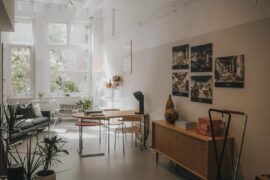
Sydney’s newest design concept store, HOW WE LIVE, explores the overlap between home and workplace – with a Surry Hills pop-up from Friday 28th November.

Merging two hotel identities in one landmark development, Hotel Indigo and Holiday Inn Little Collins capture the spirit of Melbourne through Buchan’s narrative-driven design – elevated by GROHE’s signature craftsmanship.

The announcement of Volker Haug as this year’s recipient of the Melbourne Design Week Prize starts the event on a high note.
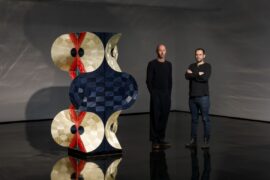
Melbourne design Week is just around the corner and here’s a glimpse of what to expect!
The internet never sleeps! Here's the stuff you might have missed
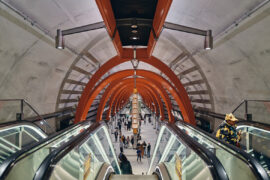
A collaboration between Hassell, Weston Williamson + Partners (WW+P Architects) and Rogers Stirk Harbour + Partners (RSHP) sees the opening of five new underground stations.
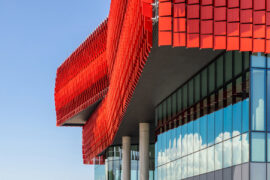
In the New Year, architecture will be defined by its ability to orchestrate relationships between inside and outside, public and private, humans and ecology, and data and intuition.
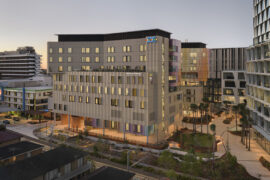
BLP’s new Sydney Children’s Hospital, Randwick building brings together paediatric care, family-centred design and Australia’s first Children’s Comprehensive Cancer Centre in a major addition to the Randwick Health & Innovation Precinct.